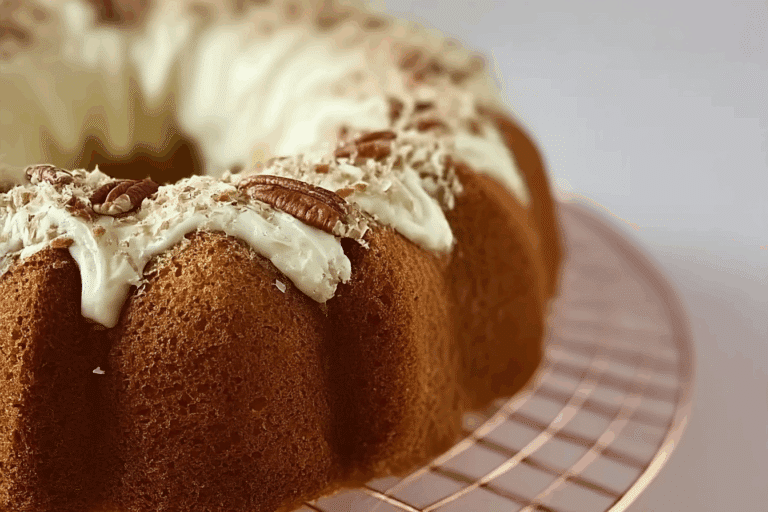Master the Art of Silky Sabayon Recipe at Home
Discover the delicate and airy delight of the classic Sabayon Recipe, a luxurious dessert that transforms simple ingredients into a velvety, frothy masterpiece. This dessert is an invitation to master the art of French culinary tradition right in your own kitchen, delivering a light, custard-like treat that is both elegant and surprisingly easy to make. Perfect for impressing guests or treating yourself, this Sabayon Recipe melds sweetness, texture, and finesse in every spoonful.
Why You’ll Love This Recipe
- Effortlessly elegant: Achieve a sophisticated dessert with minimal ingredients and steps.
- Light and airy texture: The frothy, creamy consistency makes it a refreshing treat unlike heavy custards.
- Versatile flavor base: Easily adapts to variations like fruit infusions or liqueur additions.
- Quick to prepare: Ready in under 20 minutes but tastes like a gourmet masterpiece.
- Impresses guests: Its creamy texture and delicate sweetness make it a showstopper for any dinner party.
Ingredients You’ll Need
Creating a perfect Sabayon Recipe relies on a handful of simple, high-quality ingredients, each playing a vital role in the dessert’s texture and flavor. From eggs that create the frothy base to sugar that adds the ideal sweetness, these essentials work in harmony to bring the dish to life.
- Egg yolks: The foundation that gives Sabayon its rich, creamy texture and golden color.
- Sugar: Sweetens the mixture, balancing the egg’s natural flavor and contributing to the smooth finish.
- Sweet white wine or Marsala: Adds fragrant depth and subtle complexity to the flavor profile.
- Vanilla extract (optional): Enhances warmth and aroma, complementing the sweetness beautifully.
- Pinch of salt: Elevates the overall flavor by balancing and sharpening the sweetness.
Variations for Sabayon Recipe
One of the reasons the Sabayon Recipe is so beloved is its adaptability. You can easily adjust it for dietary preferences or to suit the flavor profile you’re craving, turning this classic into your own signature dessert with just a few tweaks.
- Fruit-infused Sabayon: Stir in fresh berries or pureed mango for a natural fruity twist.
- Chocolate Sabayon: Add melted dark chocolate or cocoa powder for a decadent, indulgent version.
- Non-alcoholic version: Substitute wine with fruit juices like white grape or apple to maintain vibrant flavor without alcohol.
- Herb or spice infusion: Incorporate hints of rosemary, cinnamon, or lemon zest for an aromatic lift.
- Dairy-free Sabayon: Use a plant-based wine or juice and ensure no added dairy to keep it vegan-friendly.

How to Make Sabayon Recipe
Step 1: Prepare Your Double Boiler Setup
Fill a medium pot with a couple of inches of water and bring it to a gentle simmer over medium heat. Use a heatproof bowl that fits snugly on top without touching the water, perfect for gently cooking the egg yolks without scrambling.
Step 2: Combine the Egg Yolks and Sugar
In your heatproof bowl, whisk together the egg yolks and sugar until thoroughly combined. This mixture is the base of your Sabayon and careful whisking will help it become silky and smooth.
Step 3: Add the Wine Slowly
Gradually pour in the sweet white wine or Marsala while continuously whisking. This helps infuse the eggs evenly and build that ethereal foam-like texture that’s signature to Sabayon.
Step 4: Whisk Over Simmering Water
Place the bowl over the simmering water, whisking vigorously and constantly until the mixture thickens and triples in volume. This process usually takes about 8-10 minutes and requires patience and energy, but the results are well worth it.
Step 5: Remove and Serve Immediately
Once thickened into a warm, billowy custard, remove the bowl from heat. The Sabayon Recipe is best served fresh; however, you can let it cool slightly before pairing with your favorite accompaniments.
Pro Tips for Making Sabayon Recipe
- Use fresh eggs: Fresher eggs whip better, giving you that luscious texture.
- Work constantly: Continuous whisking prevents the eggs from scrambling and ensures a smooth custard.
- Gentle heat is key: Keep the water at a simmer, not a boil, to avoid curdling.
- Watch for volume change: The Sabayon is ready when it’s thickened and triples in size—don’t rush this step.
- Serve immediately: Sabayon loses its airy quality as it cools; enjoy it fresh for best results.
How to Serve Sabayon Recipe
Garnishes
Complement the creamy Sabayon with fresh berries, shaved chocolate, or a sprinkle of toasted nuts for texture contrast and visual appeal. A dusting of powdered sugar or fresh mint leaves also add a delicate, elegant touch.
Side Dishes
Serve your Sabayon alongside seasonal fruits like poached pears or stone fruits, shortbread cookies, or light sponge cakes to enhance the flavor experience without overpowering the dessert.
Creative Ways to Present
Consider layering Sabayon in delicate glasses with fruit compote or crunchy granola for a parfait-inspired treat. Alternatively, use it as a sauce poured warm over ice cream or grilled peaches for an irresistible finish.
Make Ahead and Storage
Storing Leftovers
Sabayon is best enjoyed fresh, but if you need to store leftovers, cover the bowl tightly with plastic wrap and refrigerate for up to 24 hours. Note that the texture will become denser and less frothy.
Freezing
Freezing is not recommended as it disrupts the delicate foam structure and changes the texture dramatically upon thawing.
Reheating
If necessary, gently warm Sabayon over a double boiler while whisking constantly to revive some of its original fluffiness. Avoid microwave reheating as this may scramble the eggs.
FAQs
What is Sabayon?
Sabayon is a light, frothy Italian or French dessert made by whisking egg yolks, sugar, and wine over gentle heat until thickened.
Can I use other types of wine for Sabayon?
Yes, you can experiment with sweet white wines, Marsala, or even sherry—all add unique flavors to the Sabayon.
Is Sabayon suitable for kids?
Because Sabayon contains raw or lightly cooked eggs and alcohol, it may not be ideal for young children unless modified with non-alcoholic liquids and safe cooking methods.
How do I prevent my Sabayon from curdling?
Keep the heat low and whisk continuously to prevent the egg yolks from cooking unevenly and curdling.
Can Sabayon be made vegan?
Traditional Sabayon uses eggs, but vegan versions can be crafted using plant-based egg substitutes, although the texture will differ slightly.
Final Thoughts
Now that you’ve unlocked the secrets of the Sabayon Recipe, it’s time to bring this silky, frothy delight into your kitchen. With its rich heritage and simple elegance, this dessert promises to elevate any occasion. Whisk up your first batch, customize it your way, and watch your friends and family savor every creamy bite!
Related Posts
- Brighten Your Table with Lemon Blueberry Crumble Cheesecake
- Decadent Triple Chocolate Roll Cake for Chocolate Lovers
- Triple Chocolate Mousse Cake: Decadence in Every Bite

Sabayon Recipe
- Prep Time: 5 minutes
- Cook Time: 10 minutes
- Total Time: 15 minutes
- Yield: 4 servings
- Category: Dessert
- Method: Stovetop (Double Boiler)
- Cuisine: French / Italian
- Diet: Vegetarian
Description
Experience the classic Sabayon, a delicate and airy French dessert made by whisking egg yolks, sugar, and sweet white wine or Marsala over gentle heat until it becomes a light, frothy custard. This elegant and versatile treat is quick to prepare, impresses guests with its creamy texture, and can be customized with fruit, chocolate, or spice infusions.
Ingredients
Main Ingredients
- 4 large egg yolks
- 1/4 cup granulated sugar
- 1/2 cup sweet white wine or Marsala
- 1/2 teaspoon vanilla extract (optional)
- Pinch of salt
Instructions
- Prepare Your Double Boiler Setup: Fill a medium pot with a couple of inches of water and bring it to a gentle simmer over medium heat. Use a heatproof bowl that fits snugly on top without touching the water to cook the egg yolks gently without scrambling.
- Combine the Egg Yolks and Sugar: In your heatproof bowl, whisk together the egg yolks and sugar until thoroughly combined to create a silky and smooth base.
- Add the Wine Slowly: Gradually pour in the sweet white wine or Marsala while continuously whisking to infuse the eggs evenly and help build the signature foam-like texture.
- Whisk Over Simmering Water: Place the bowl over the simmering water, whisking vigorously and constantly until the mixture thickens and triples in volume, which takes about 8-10 minutes.
- Remove and Serve Immediately: Once thickened into a warm, billowy custard, remove the bowl from heat. Serve fresh or let it cool slightly before pairing with desired accompaniments.
Notes
- Use fresh eggs for better whipping and texture.
- Whisk continuously to avoid curdling or scrambling the eggs.
- Maintain gentle simmering heat; do not boil the water.
- The Sabayon is ready when it thickens and triples in volume—do not rush this step.
- Serve immediately to enjoy the light and airy texture at its best.
- Leftovers can be refrigerated up to 24 hours but will lose frothiness.
- Freezing Sabayon is not recommended as it alters texture.
- If reheating, do so gently over a double boiler while whisking; avoid microwaving.
Nutrition
- Serving Size: 1/4 recipe (approx. 100g)
- Calories: 180
- Sugar: 15g
- Sodium: 30mg
- Fat: 12g
- Saturated Fat: 4g
- Unsaturated Fat: 7g
- Trans Fat: 0g
- Carbohydrates: 16g
- Fiber: 0g
- Protein: 3g
- Cholesterol: 210mg







